Attaching PVC to wood is a common requirement for both DIY enthusiasts and professionals working on various projects ranging from home improvements to creative crafts. This task might seem daunting at first, given the different properties of PVC (Polyvinyl Chloride) and wood materials. However, with the right approach, tools, and adhesives, creating a durable and stable attachment is quite achievable.
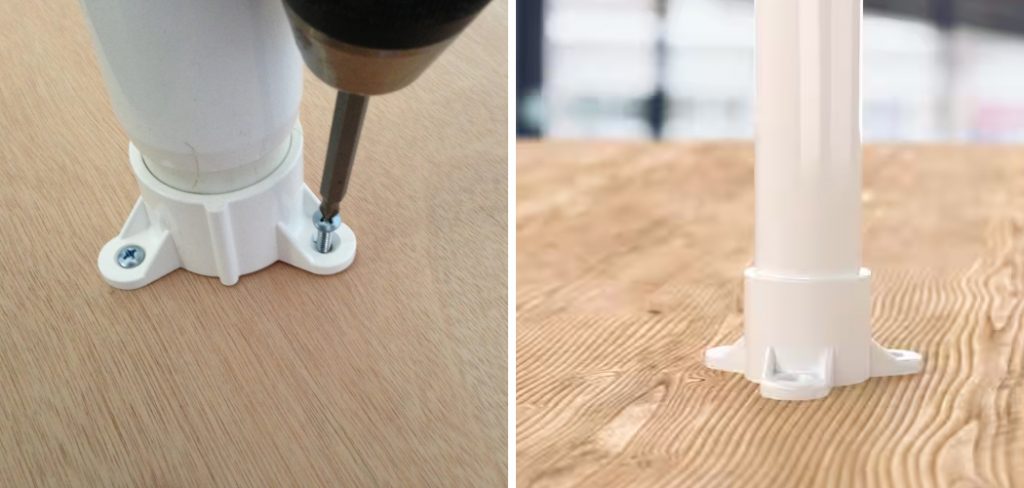
This guide on how to attach pvc to wood aims to provide you with clear, step-by-step instructions on how to effectively join PVC to wood, ensuring your project’s longevity and success. Whether you’re building a garden structure, working on interior home decor, or assembling a unique piece of art, mastering this skill will open up new possibilities in your crafting and construction endeavors.
What is PVC?
PVC, or Polyvinyl Chloride, is a synthetic polymer that is widely used in various applications due to its durability, flexibility, and low cost. It is commonly found in plumbing pipes, electrical insulation, flooring materials, and even clothing. When working with PVC for attaching it to wood, it’s essential to understand its properties and characteristics to choose the right approach and materials for a successful attachment.
You can identify PVC by its smooth, plastic-like appearance and the letters “PVC” or “V” imprinted on it. It is relatively lightweight compared to wood, making it easy to handle and attach to different surfaces. Additionally, PVC is resistant to moisture, chemicals, and heat, making it suitable for both indoor and outdoor use.
Why Attach PVC to Wood?
There are several reasons why you may need to attach PVC to wood. It could be for structural support, decorative purposes, or simply for convenience. For example, attaching a PVC pipe frame to wooden posts can create a sturdy and lightweight structure for your garden or backyard. Attaching PVC trim pieces to wooden furniture can add both style and durability.
You may also need to attach PVC to wood when repairing or renovating existing structures. For instance, if a wooden window frame is damaged, you can use PVC trim pieces to reinforce and restore its integrity.
What Type of Wood Can Be Used?
When it comes to attaching PVC to wood, the type of wood you choose is critical. Different types of wood have varying properties, such as density, strength, and moisture content, which can affect the overall bond strength between the PVC and wood. Ideally, you should use a dense hardwood like oak or maple for better adhesion and stability. However, softwoods like pine or cedar can also work well if properly prepared and treated.
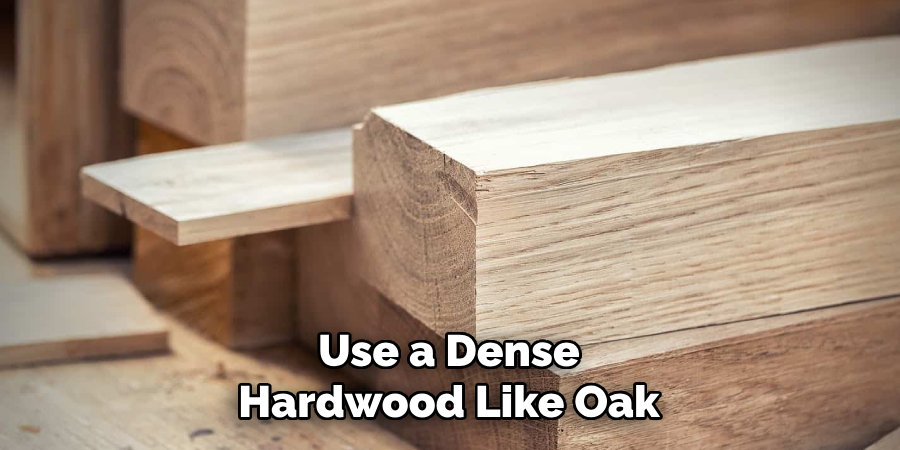
It’s important to note that the wood should be clean, dry, and free of any sealants or finishes for a strong attachment. Any dirt, grease, or moisture on the wood surface can hinder the adhesive’s ability to bond with both surfaces.
10 Step-by-step Guidelines on How to Attach Pvc to Wood
Step 1: Measure and Cut PVC
The first step in attaching PVC to wood is to measure and cut the PVC pieces according to your project’s specifications. Use a tape measure and a pencil to mark the desired length on the PVC, then use a saw or pipe cutter to make clean, straight cuts.
You can also use a miter saw for angled cuts. It’s important to wear protective gear, such as goggles and gloves when cutting PVC to avoid any injuries. The PVC pieces should have a snug fit with the wood surface for maximum adhesion.
Step 2: Sand PVC Edges
To ensure a strong bond between the PVC and wood, it’s essential to sand the edges of the PVC pieces. This will create a rough surface that allows the adhesive to grip onto both materials effectively.
Use fine-grit sandpaper or a sanding block to lightly sand the edges and remove any burrs or rough spots. The goal is to create a slightly textured surface without sanding too much and compromising the PVC’s structural integrity. You can also use a file to smooth out any irregular edges.
Step 3: Prepare Wood Surface
Before attaching PVC, it’s crucial to prepare the wood surface properly. Use sandpaper or a sanding block to smooth out any rough areas and remove any debris or dirt. As mentioned earlier, the wood should be clean, dry, and free of any finishes for better adhesion.
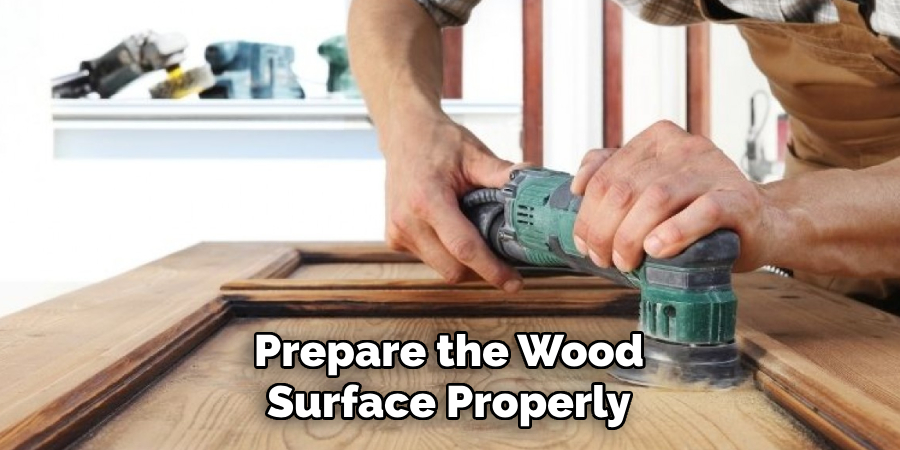
You can also use a primer or wood conditioner to further enhance the bond between the PVC and wood. It’s recommended to sand the wood surface lightly and wipe it clean before applying any primer or conditioner. But be sure to follow the product’s instructions for the best results.
Step 4: Choose an Appropriate Adhesive
Selecting the right adhesive is crucial for a successful attachment of PVC to wood. There are various types of adhesives available, such as epoxy, polyurethane, and construction adhesives. Each has its own strengths and limitations, so it’s essential to choose one that suits your project’s needs.
For example, if you need a fast-drying adhesive for quick fixes or outdoor projects, polyurethane might be the best choice. On the other hand, if you’re working on a large and heavy structure that requires a strong bond, epoxy might be more suitable.
Step 5: Apply Adhesive to PVC
Once you have chosen the appropriate adhesive, it’s time to apply it to the PVC pieces. Follow the manufacturer’s instructions for proper application, and use a caulking gun or brush to evenly spread the adhesive on the PVC edges. It’s important to work quickly and avoid applying too much adhesive, as this can lead to messy and uneven bonds.
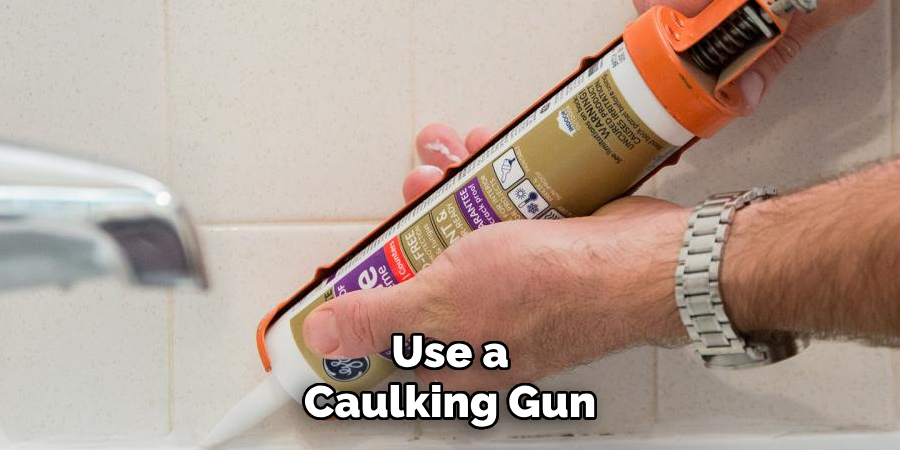
It’s also a good idea to work in a well-ventilated area and wear gloves when handling adhesives. The fumes from some adhesives can be harmful, and the adhesive may irritate your skin. It’s best to use a small amount of adhesive at first and add more if needed.
Step 6: Attach PVC to Wood
After applying the adhesive, carefully position the PVC pieces onto the prepared wood surface. Use clamps or weights to hold them in place while the adhesive sets. Be sure to follow the adhesive’s curing time before removing the clamps or weights. This can range from a few minutes to several hours, depending on the type of adhesive used.
You can also use a level to ensure that the PVC is straight and aligned with the wood surface. The adhesive should hold the PVC firmly in place, but you can also use screws or nails for added stability if needed. But be sure to pre-drill holes in the PVC before using screws or nails to avoid cracking or splitting.
Step 7: Check for Any Gaps
Once the PVC is attached to the wood, check for any gaps between the two materials. These gaps can weaken the bond and compromise the structure’s integrity. If you notice any gaps, fill them in with extra adhesive and use a putty knife or your finger to smooth it out. It’s essential to address these gaps immediately before the adhesive sets.
You can also use a caulking gun to fill larger gaps for a more secure bond. But be sure to wipe away any excess adhesive before it dries. But if the gaps are too significant, it’s best to remove the PVC and start over with a cleaner surface.
Step 8: Clean Up Excess Adhesive
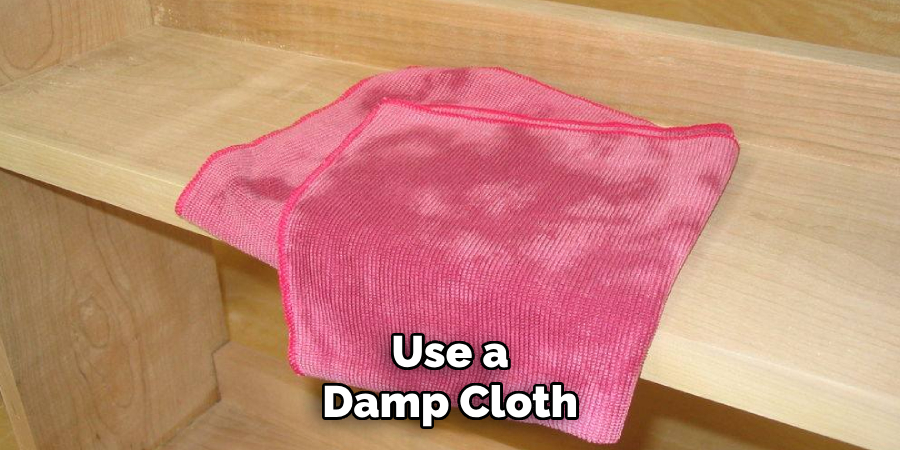
It’s common for some adhesive to squeeze out from the edges of the PVC and wood during attachment. Use a damp cloth or paper towel to remove any excess adhesive before it dries. If the adhesive has already dried, you can use a razor blade or sandpaper to carefully scrape it off.
You can also use a solvent recommended by the adhesive manufacturer to remove any stubborn residue. It’s essential to clean up excess adhesive for a neat and professional-looking finish. The adhesive can also interfere with any paint or finish you may want to apply later on.
Step 9: Allow Adhesive to Cure
After attaching PVC to wood, allow the adhesive to cure completely before using the structure or furniture. This can take anywhere from a few hours to a full day, depending on the adhesive used. It’s crucial not to disturb or put any weight on the PVC during this time, as it can weaken the bond.
It’s also important to follow the manufacturer’s instructions for proper curing and wait until the recommended time has elapsed before putting any stress on the attachment. You can also use tape or clamps to provide extra support while the adhesive cures.
Step 10: Finishing Touches
Once the adhesive has fully cured, you can sand and paint the PVC if desired. This will give it a smoother finish and make it blend in with the wood for a seamless look. You can also apply a clear sealant or varnish to protect the wood and PVC from moisture or UV rays. It’s important to use products suitable for both materials and follow their instructions carefully.
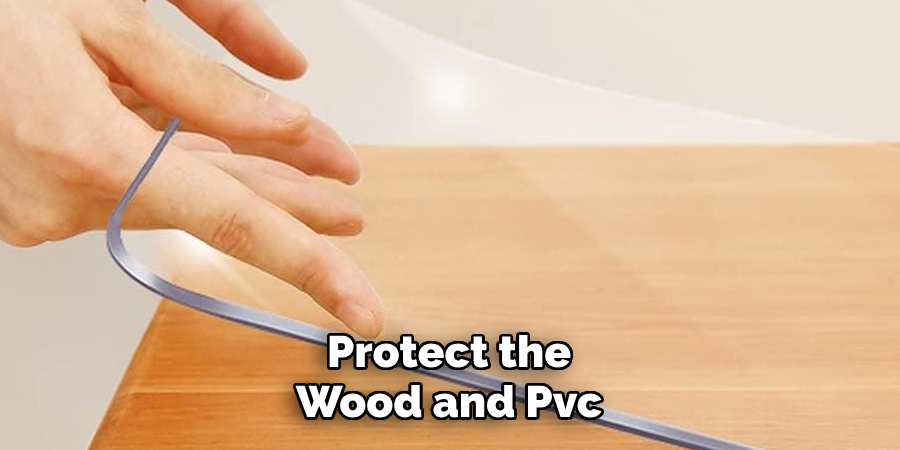
After completing these finishing touches, your PVC and wood project is ready to be proudly displayed or used for its intended purpose. Remember to follow safety precautions, choose the right materials and tools, and take your time for a successful and sturdy attachment.
Following these steps on how to attach pvc to wood will ensure a strong and durable bond between PVC and wood. Whether you’re building furniture, home decor, or structural elements with these materials, proper attachment is essential for their longevity and stability. With the right techniques and materials, attaching PVC to wood can be a straightforward process that yields impressive results.
Do You Need to Use Professionals?
Attaching PVC to wood can be a DIY project for those experienced in woodworking and construction. However, if you’re unsure of your skills or the project’s complexity, it’s best to hire professionals. They have the experience, tools, and knowledge to ensure a secure attachment that meets safety standards.
It’s also essential to consult with them if you’re working on larger structures or projects that require special considerations. They can provide expert advice and recommend the best techniques and materials for your specific project needs. Remember, it’s always better to be safe than sorry when it comes to attaching PVC to wood.
Overall, attaching PVC to wood is a useful skill for various DIY and construction projects. With proper preparation, adhesive selection, and application techniques, you can achieve a strong and long-lasting bond between these materials. Whether you’re repairing, building, or creating with PVC and wood, following these steps will help you achieve professional-looking results.
How Long Will It Take?
The time it takes to attach PVC to wood can vary depending on the adhesive used and the project’s complexity. Generally, it can take anywhere from a few hours to a full day for the adhesive to cure completely. It’s crucial to follow the manufacturer’s instructions for curing times and not rush the process as this can compromise the bond.
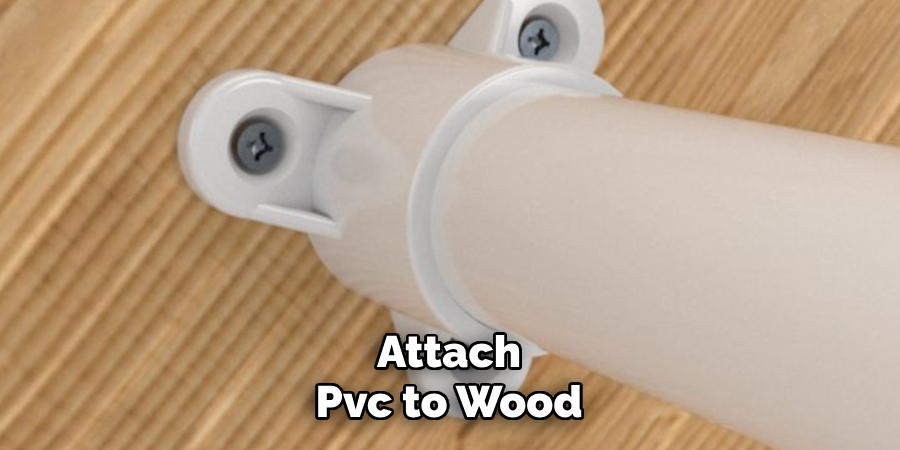
Additionally, preparation and finishing touches may add extra time to the project. Remember to plan accordingly and allow enough time for the adhesive to cure properly before using the attached PVC and wood structure or furniture.
You now have the knowledge and steps to confidently attach PVC to wood for your next project. Whether it’s a small DIY or a more significant construction undertaking, following these guidelines will ensure a successful attachment that will withstand the test of time. Remember to prioritize safety and take your time for a sturdy and professional-looking finish.
Frequently Asked Questions
Q: Can You Attach Pvc to Any Type of Wood?
A: Yes, but it’s important to choose a strong and sturdy wood for structural projects. Softer woods like pine may not be suitable for heavy-duty attachments. You should also avoid using wood with finishes or coatings, as this can hinder the adhesion between PVC and wood. Unfinished or sanded wood is recommended for the best results.
Q: Can You Use Regular Glue to Attach Pvc to Woo
A: No, regular glue is not recommended for attaching PVC to wood. It’s best to use adhesives specifically designed for this purpose to ensure a strong and long-lasting bond. You can consult with a hardware store or manufacturer for the best adhesive for your project. It’s also essential to follow the adhesive’s instructions for proper application and curing time. You may also need to use clamps or tape for extra support while the adhesive cures.
Q: Can You Attach Pvc to Wood Without Screws or Nails?
A: Yes, with the right adhesive and proper preparation, you can attach PVC to wood without screws or nails. However, for added stability, you can use screws or nails in conjunction with the adhesive. It’s important to follow the manufacturer’s instructions for proper usage of these tools and ensure they are suitable for both PVC and wood materials.
Q: Can You Use Adhesive to Attach Pvc to Painted Wood?
A: It’s not recommended to attach PVC directly onto painted wood as it may not adhere properly. The smooth surface of the paint can prevent the adhesive from penetrating and creating a strong bond. It’s best to sand or roughen up the painted wood surface before attaching PVC for better adhesion. As a general rule, it’s always better to attach PVC onto unfinished or sanded wood surfaces.
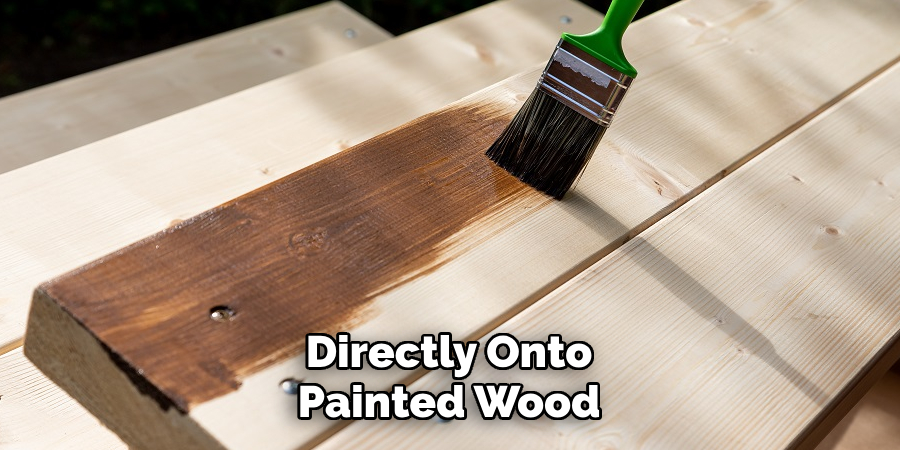
Q: How Long Does It Take for Adhesive to Fully Cure?
A: The curing time for adhesive can vary depending on the type used. Some adhesives may cure in as little as a few minutes, while others may take several hours or even a full day. It’s crucial to follow the manufacturer’s instructions for proper curing time before putting any stress on the attachment. Rushing the process can weaken the bond and compromise the structure’s integrity. It’s always better to wait longer than recommended for a stronger bond instead of rushing and risking failure.
Conclusion
Attaching PVC to wood is a useful skill that can come in handy for various projects. With the right tools and techniques, you can create a strong and long-lasting bond between these two materials. It’s important to always follow safety precautions when working with adhesives and power tools. Remember to test the strength of your attachment before relying on it for heavy loads or high-stress situations.
With practice and patience, you’ll soon become proficient in attaching PVC to wood, expanding your DIY abilities and adding a new dimension to your projects. So go ahead and confidently take on those projects that require both PVC and wood – armed with the knowledge from this guide on how to attach pvc to wood, you’re sure to succeed!
About the Author
Adrian Green, a lifelong woodworking enthusiast, shares his passion for the craft through The Woodenify Blog. With a foundation built on years of hands-on experience in his father’s woodworking shop, Adrian is dedicated to helping others learn and grow in the world of DIY woodworking. His approach to woodworking combines creativity, practicality, and a deep appreciation for the art of building with your own hands. Through his blog, he inspires individuals of all skill levels to embark on their own woodworking journeys, creating beautiful, functional pieces of furniture and décor.
Professional Focus
- Specializes in DIY woodworking projects, from furniture to home décor.
- Provides step-by-step guides and practical tutorials for woodworkers of all skill levels.
- Dedicated to helping readers build confidence and skill through easy-to-follow instructions and tips.
- Passionate about fostering a community of makers who can share, learn, and grow together.
Education History
- University of Craft and Design – Bachelor of Fine Arts (BFA) in Woodworking and Furniture Design
- Woodworking Apprenticeships – Extensive hands-on training with skilled craftsmen to refine carpentry and furniture making techniques.
- Online Courses & Masterclasses – Continued education in advanced woodworking techniques, design principles, and specialized tools
Expertise:
- DIY woodworking, carpentry, furniture making, and home décor projects.
- Creating accessible tutorials and guides for beginner to advanced woodworkers.
- Sharing the joys and satisfaction of woodworking, from raw materials to finished products.
